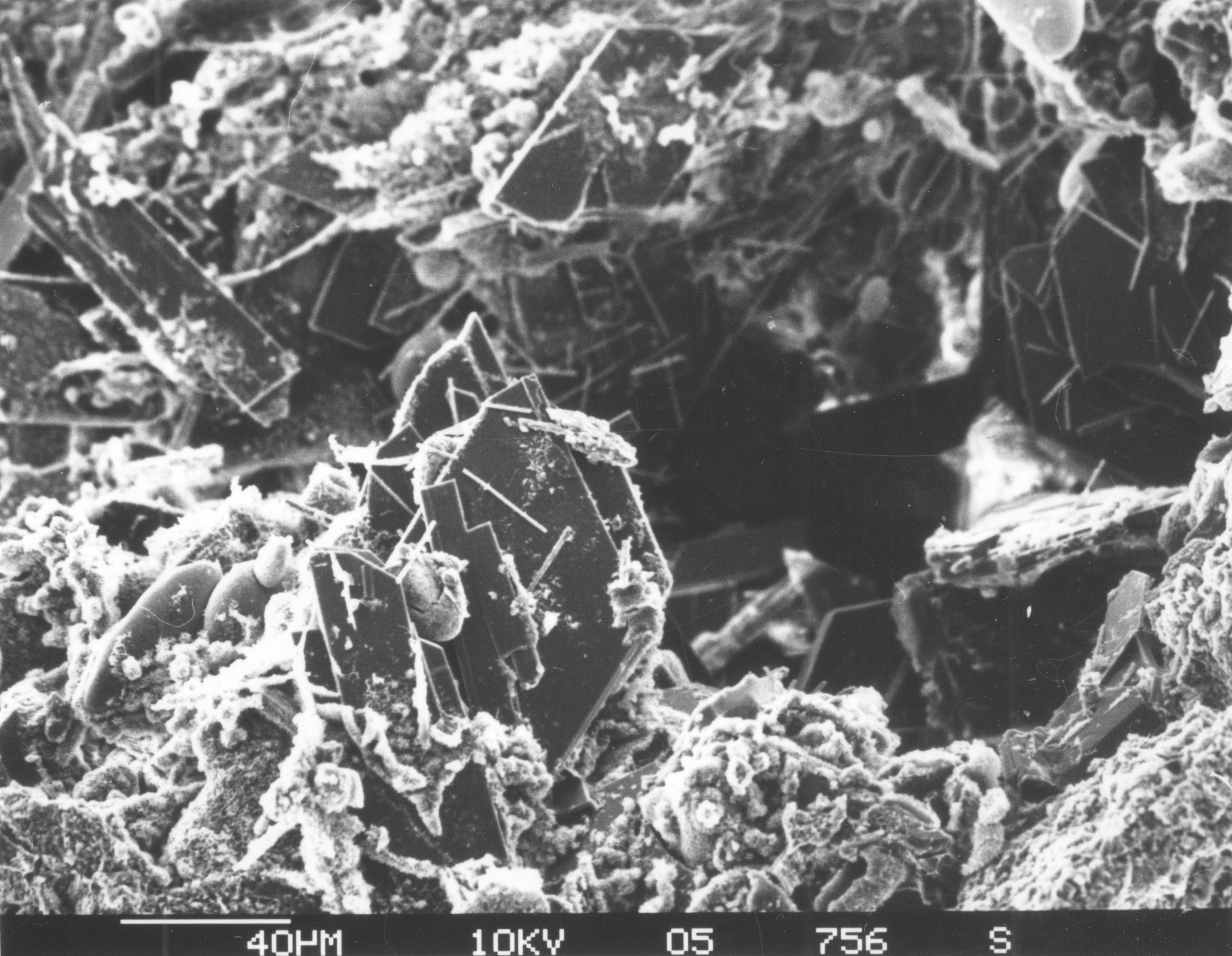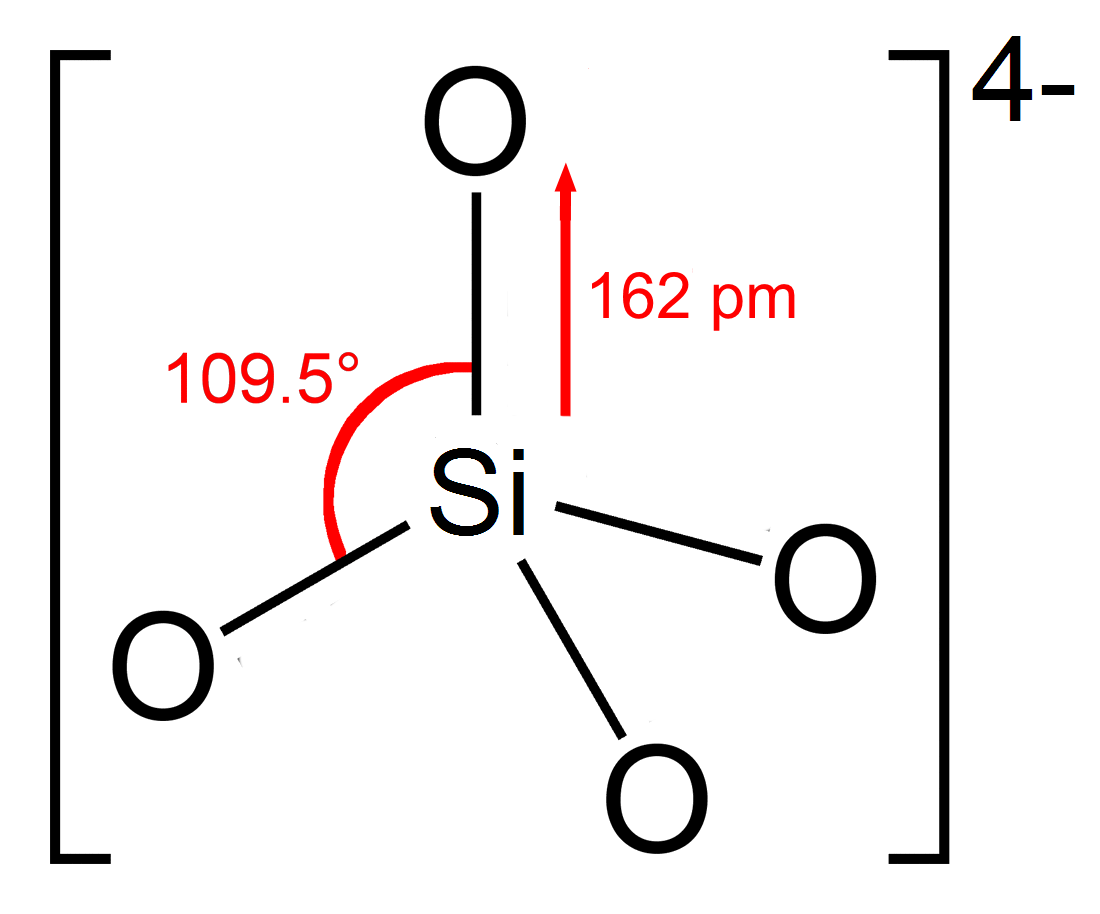|
Reverse Weathering
Reverse weathering generally refers to the formation of a clay neoformation that utilizes cations and alkalinity in a process unrelated to the weathering of silicates. More specifically reverse weathering refers to the formation of authigenic clay minerals from the reaction of 1) biogenic silica with aqueous cations or cation bearing oxides or 2) cation poor precursor clays with dissolved cations or cation bearing oxides. Formation of cation abundant authigenic silicate clays is thought to occur through the following simplified reaction:Biogenic opal (SiO2) + metal hydroxides (Al(OH)4−) + dissolved cations (K+, Mg2+, Li+, etc.) + bicarbonate (HCO3) → clay minerals + H2O + CO2 The formation of authigenic clay minerals by reverse weathering is not fully understood. Much of the research done has been conducted in localized areas, such as the Amazon Delta, Mississippi Delta, and in the Ethiopian Rift lakes, making a global understanding of the process difficult. Much of the driving ... [...More Info...] [...Related Items...] OR: [Wikipedia] [Google] [Baidu] |
Authigenic
Authigenesis is the process whereby a mineral or sedimentary rock deposit is generated where it is found or observed. Such deposits are described as authigenic. Authigenic sedimentary minerals form during sedimentation by precipitation or recrystallization instead of being transported from elsewhere (allogenic) by water or wind. Authigenic sediments are the main constituents of deep sea sedimentation. Authigenic clays tend to reduce the porosity of sediments, thus reducing permeability. In metamorphic petrology an authigenic mineral is one formed ''in situ'' during metamorphism, again by precipitation from fluids or recrystallization. For any mineral to be precipitated, the water must be supersaturated with respect to that mineral. For calcite, this means that the area of deposition must be above the carbonate compensation depth, or that the pore waters are sufficiently saturated due to dissolution of other grains that precipitation can begin. The alkalinity can also be reduc ... [...More Info...] [...Related Items...] OR: [Wikipedia] [Google] [Baidu] |
X-ray Microscope
An X-ray microscope uses electromagnetic radiation in the soft X-ray band to produce magnified images of objects. Since X-rays penetrate most objects, there is no need to specially prepare them for X-ray microscopy observations. Unlike visible light, X-rays do not reflect or refract easily and are invisible to the human eye. Therefore, an X-ray microscope exposes film or uses a charge-coupled device (CCD) detector to detect X-rays that pass through the specimen. It is a contrast imaging technology using the difference in absorption of soft X-rays in the water window region (wavelengths: 2.34–4.4 nm, energies: 280–530 eV) by the carbon atom (main element composing the living cell) and the oxygen atom (an element of water). Microfocus X-ray also achieves high magnification by projection. A microfocus X-ray tube produces X-rays from an extremely small focal spot (5 μm down to 0.1 μm). The X-rays are in the more conventional X-ray range (20 to 300 keV) ... [...More Info...] [...Related Items...] OR: [Wikipedia] [Google] [Baidu] |
Thermodynamics
Thermodynamics is a branch of physics that deals with heat, work, and temperature, and their relation to energy, entropy, and the physical properties of matter and radiation. The behavior of these quantities is governed by the four laws of thermodynamics which convey a quantitative description using measurable macroscopic physical quantities, but may be explained in terms of microscopic constituents by statistical mechanics. Thermodynamics applies to a wide variety of topics in science and engineering, especially physical chemistry, biochemistry, chemical engineering and mechanical engineering, but also in other complex fields such as meteorology. Historically, thermodynamics developed out of a desire to increase the efficiency of early steam engines, particularly through the work of French physicist Sadi Carnot (1824) who believed that engine efficiency was the key that could help France win the Napoleonic Wars. Scots-Irish physicist Lord Kelvin was the first to ... [...More Info...] [...Related Items...] OR: [Wikipedia] [Google] [Baidu] |
Terrigenous Sediment
In oceanography, terrigenous sediments are those derived from the erosion of rocks on land; that is, they are derived from ''terrestrial'' (as opposed to marine) environments. Consisting of sand, mud, and silt carried to sea by rivers, their composition is usually related to their source rocks; deposition of these sediments is largely limited to the continental shelf. Sources of terrigenous sediments include volcanoes, weathering of rocks, wind-blown dust, grinding by glaciers, and sediment carried by rivers or icebergs. Terrigenous sediments are responsible for a significant amount of the salt in today's oceans. Over time rivers continue to carry minerals to the ocean but when water evaporates, it leaves the minerals behind. Since chlorine and sodium are not consumed by biological processes, these two elements constitute the greatest portion of dissolved minerals. Quantity Some 1.35 billion tons, or 8% of global river-borne sediment (16.5-17 billion tons globally), is tra ... [...More Info...] [...Related Items...] OR: [Wikipedia] [Google] [Baidu] |
Aluminate
In chemistry, an aluminate is a compound containing an oxyanion of aluminium, such as sodium aluminate. In the naming of inorganic compounds, it is a suffix that indicates a polyatomic anion with a central aluminum atom. Aluminate oxyanions Aluminium oxide (alumina) is amphoteric: it dissolves in both bases and acids. When dissolved in bases it forms hydroxyaluminate ions in the same way as aluminium hydroxide or aluminium salts. The hydroxyaluminate or hydrated aluminate can be precipitated and then calcined to produce anhydrous aluminates. Aluminates are often formulated as a combination of basic oxide and aluminium oxide, for example the formula of anhydrous sodium aluminate NaAlO2 would be shown as Na2O·Al2O3. A number of aluminate oxyanions are known: * The simplest is the approximately tetrahedral found in the compound Na5AlO4, * framework ions in anhydrous sodium aluminate NaAlO2 and monocalcium aluminate, CaAl2O4 made up of corner-sharing tetrahedra. * A ring ani ... [...More Info...] [...Related Items...] OR: [Wikipedia] [Google] [Baidu] |
Silicate
In chemistry, a silicate is any member of a family of polyatomic anions consisting of silicon and oxygen, usually with the general formula , where . The family includes orthosilicate (), metasilicate (), and pyrosilicate (, ). The name is also used for any salt of such anions, such as sodium metasilicate; or any ester containing the corresponding chemical group, such as tetramethyl orthosilicate. The name "silicate" is sometimes extended to any anions containing silicon, even if they do not fit the general formula or contain other atoms besides oxygen; such as hexafluorosilicate .Most commonly, silicates are encountered as silicate minerals. For diverse manufacturing, technological, and artistic needs, silicates are versatile materials, both natural (such as granite, gravel, and garnet) and artificial (such as Portland cement, ceramics, glass, and waterglass). Structural principles In all silicates, silicon atom occupies the center of an idealized tetrahedro ... [...More Info...] [...Related Items...] OR: [Wikipedia] [Google] [Baidu] |
Foraminifera
Foraminifera (; Latin for "hole bearers"; informally called "forams") are single-celled organisms, members of a phylum or class of amoeboid protists characterized by streaming granular ectoplasm for catching food and other uses; and commonly an external shell (called a "test") of diverse forms and materials. Tests of chitin (found in some simple genera, and Textularia in particular) are believed to be the most primitive type. Most foraminifera are marine, the majority of which live on or within the seafloor sediment (i.e., are benthic), while a smaller number float in the water column at various depths (i.e., are planktonic), which belong to the suborder Globigerinina. Fewer are known from freshwater or brackish conditions, and some very few (nonaquatic) soil species have been identified through molecular analysis of small subunit ribosomal DNA. Foraminifera typically produce a test, or shell, which can have either one or multiple chambers, some becoming quite elaborate in ... [...More Info...] [...Related Items...] OR: [Wikipedia] [Google] [Baidu] |
Isotope
Isotopes are two or more types of atoms that have the same atomic number (number of protons in their nuclei) and position in the periodic table (and hence belong to the same chemical element), and that differ in nucleon numbers ( mass numbers) due to different numbers of neutrons in their nuclei. While all isotopes of a given element have almost the same chemical properties, they have different atomic masses and physical properties. The term isotope is formed from the Greek roots isos ( ἴσος "equal") and topos ( τόπος "place"), meaning "the same place"; thus, the meaning behind the name is that different isotopes of a single element occupy the same position on the periodic table. It was coined by Scottish doctor and writer Margaret Todd in 1913 in a suggestion to the British chemist Frederick Soddy. The number of protons within the atom's nucleus is called its atomic number and is equal to the number of electrons in the neutral (non-ionized) atom. Each atomic n ... [...More Info...] [...Related Items...] OR: [Wikipedia] [Google] [Baidu] |
Inductively Coupled Plasma Mass Spectrometry
Inductively coupled plasma mass spectrometry (ICP-MS) is a type of mass spectrometry that uses an inductively coupled plasma to ionize the sample. It atomizes the sample and creates atomic and small polyatomic ions, which are then detected. It is known and used for its ability to detect metals and several non-metals in liquid samples at very low concentrations. It can detect different isotopes of the same element, which makes it a versatile tool in isotopic labeling. Compared to atomic absorption spectroscopy, ICP-MS has greater speed, precision, and sensitivity. However, compared with other types of mass spectrometry, such as thermal ionization mass spectrometry (TIMS) and glow discharge mass spectrometry (GD-MS), ICP-MS introduces many interfering species: argon from the plasma, component gases of air that leak through the cone orifices, and contamination from glassware and the cones. Components Inductively coupled plasma An inductively coupled plasma is a plasma that is ... [...More Info...] [...Related Items...] OR: [Wikipedia] [Google] [Baidu] |
Optical Emission Spectrometer
Optics is the branch of physics that studies the behaviour and properties of light, including its interactions with matter and the construction of instruments that use or detect it. Optics usually describes the behaviour of visible, ultraviolet, and infrared light. Because light is an electromagnetic wave, other forms of electromagnetic radiation such as X-rays, microwaves, and radio waves exhibit similar properties. Most optical phenomena can be accounted for by using the classical electromagnetic description of light. Complete electromagnetic descriptions of light are, however, often difficult to apply in practice. Practical optics is usually done using simplified models. The most common of these, geometric optics, treats light as a collection of rays that travel in straight lines and bend when they pass through or reflect from surfaces. Physical optics is a more comprehensive model of light, which includes wave effects such as diffraction and interference that ... [...More Info...] [...Related Items...] OR: [Wikipedia] [Google] [Baidu] |
Inductively Coupled Plasma
An inductively coupled plasma (ICP) or transformer coupled plasma (TCP) is a type of plasma source in which the energy is supplied by electric currents which are produced by electromagnetic induction, that is, by time-varying magnetic fields. Operation There are three types of ICP geometries: planar (Fig. 3 (a)), cylindrical (Fig. 3 (b)), and half-toroidal (Fig. 3 (c)). In planar geometry, the electrode is a length of flat metal wound like a spiral (or coil). In cylindrical geometry, it is like a helical spring. In half-toroidal geometry, it is toroidal solenoid cut along its main diameter to two equal halves. When a time-varying electric current is passed through the coil, it creates a time-varying magnetic field around it, with flux \Phi=\pi r^2 H=\pi r^2 H_0 \cos \omega t, where ''r'' is the distance to the center of coil (and of the quartz tube). According to the Faraday–Lenz's law of induction, this creates azimuthal electromotive force in the rarefied gas: U= ... [...More Info...] [...Related Items...] OR: [Wikipedia] [Google] [Baidu] |







